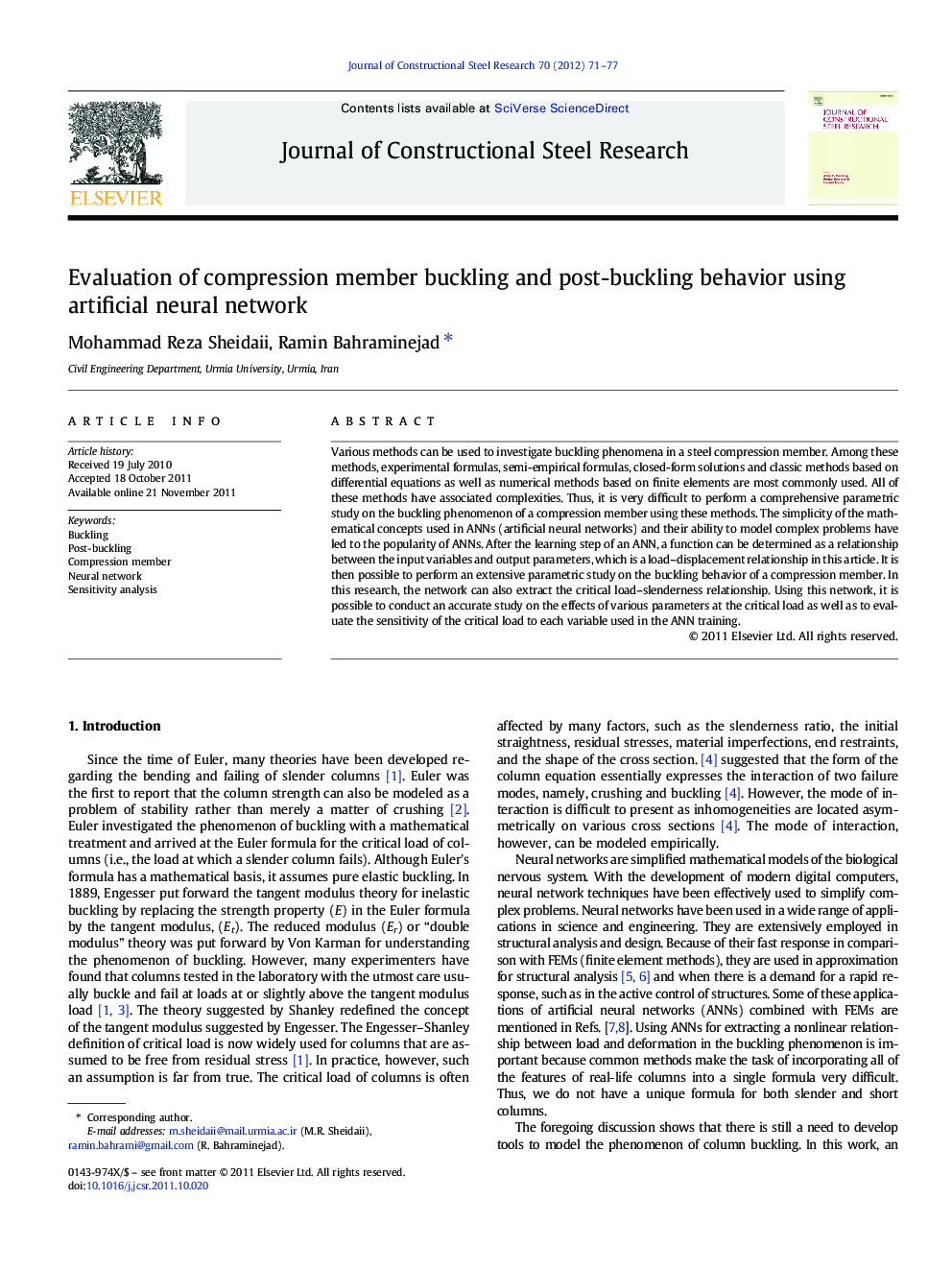| Article ID | Journal | Published Year | Pages | File Type |
|---|---|---|---|---|
| 285256 | Journal of Constructional Steel Research | 2012 | 7 Pages |
Various methods can be used to investigate buckling phenomena in a steel compression member. Among these methods, experimental formulas, semi-empirical formulas, closed-form solutions and classic methods based on differential equations as well as numerical methods based on finite elements are most commonly used. All of these methods have associated complexities. Thus, it is very difficult to perform a comprehensive parametric study on the buckling phenomenon of a compression member using these methods. The simplicity of the mathematical concepts used in ANNs (artificial neural networks) and their ability to model complex problems have led to the popularity of ANNs. After the learning step of an ANN, a function can be determined as a relationship between the input variables and output parameters, which is a load–displacement relationship in this article. It is then possible to perform an extensive parametric study on the buckling behavior of a compression member. In this research, the network can also extract the critical load–slenderness relationship. Using this network, it is possible to conduct an accurate study on the effects of various parameters at the critical load as well as to evaluate the sensitivity of the critical load to each variable used in the ANN training.
► ANN with tangent hyperbolic transfer function can evaluate column buckling behavior. ► ANN estimates the critical load-slenderness relationship properly. ► There is a 6th-order relationship between the critical load and the slenderness. ► Maximum critical load sensitivity versus imperfection occurs in average slenderness.
